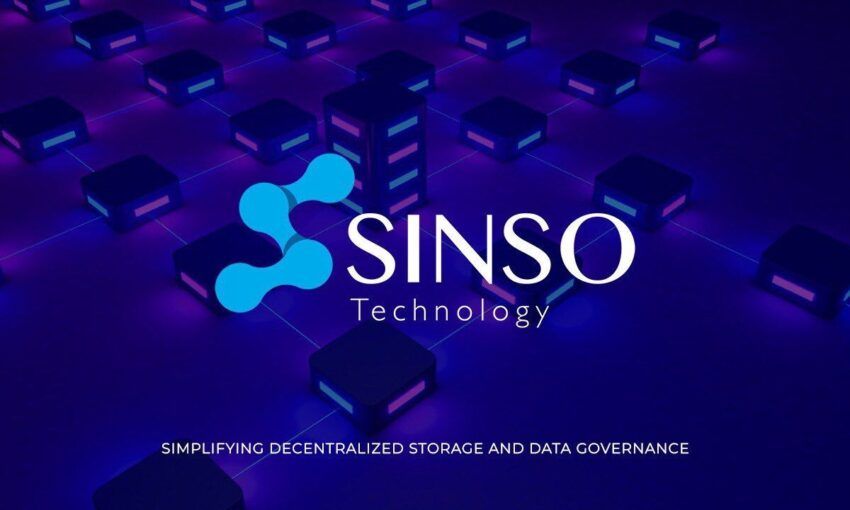SINSO, as a Web3.0 infrastructure focusing on distributed cache network and data programmability, is inspired by Filecoin. While with its own positioning, SINSO has an economic model design that differs from Filecoin.
SINSO believes that Filecoin has developed a global ultra-large-scale storage provider network under its current positioning, but the effective storage space utilization is less than 5% of its total.
The emphasis on incentives for Web3.0 ecology is the biggest difference between SINSO and other distributed storage networks. Regarding ecological construction, there are two important components, DAPP Cube and SINSO DAC, which are also the core of SINSO’s future development. Combining ecological construction incentives with token incentives, the ecological construction of SINSO is different from that of other blockchains, which constitutes the important characteristic of SINSO differentiating it from other blockchains.
In addition, this leads to rather fast basic network construction while the application ecosystem expansion is slow. A typical example would be Chia – Though with great technology, the lag of the application ecology would result in the imbalance of the economic model. In short, solely focusing on infrastructure construction without considering the application ecology from a macro perspective will lead to plenty of problems. That’s why we launched DAPP Cube.
DAPP Cube has the dual role of developer community + developer/creator economic ecology. We encourage more developers to contribute directly so that ecological participants include not only hardware providers and investors. Any ecology with a high market value, such as that of BSC or Ethereum, undoubtedly has many developers, so that tokens can be fully circulated in the ecology. But we know the perfection of the developer community needs long-time accumulation.
And supportive education and promotion also require patience. That is why DAPP Cube will directly reward SINSO developers, which would demand 1) Creation of a developer account; 2) Upload of related components and works; 3) Delivering rewards based on usage and citations.
SINSO DAC can be regarded as an application subset of Filecoin’s FVM and the AmStar chain. It emphasizes data programmability for the application layer, such as the establishment of a data-based DAO architecture (Data Dao). SINSO DAC can also be included in the incentive rules of DAPP Cube. As an open-source software architecture, its establishment will not solely rely on the SINSO R&D team.
First and foremost, SINSO is to build a distributed secondary cache network. In the Revenue/Costs model, we have many ideas similar to Filecoin. Yet since we do not need a complex space-time proof mechanism, the incentives for building distributed cache network nodes in the first stage will be much simplified. After the network reaches 2,000 nodes, we will distribute revenue to node miners. There are some rules for reference, as follows:
| Incentive Release Rule | Mining reward release rules: 30% will be released directly after each mining; 70% linearly vesting in 18 periods on each 11th day; and the release will be completed in a total of 180 days. |
| Punishment Mechanism | 2-4 hours prohibit from mining or acquiring income if you disconnected but reconnect successfully;If a node is running normally with staking but does not generate income for 5 hours, it will be kicked offline. |
| Verifier, Upload Node, Storage Node | Verifier node: Miners obtain 30% of income, guarantors 70%Upload node: Miners – 20%; Guarantors – 80%Storage node: Miners – 60%; Guarantors – 40% |
| Staking | Staking for Storage node: 200 SINSOStaking for Upload node: 10,000 SINSOStaking for Verifier node: 2,000 SINSO |
SINSO is considering training a group of Web3.0 programmers in Mumbai and Delhi, India. Solving their worries is conducive to the implementation of our economic model. People in low-income areas and extremely economically unbalanced areas are more likely to use Web3.0 to change their lives.
For example, young people in Nigeria are full of impulses and innovation, but they need the “soil” that allows them to continue to create. We can see that incentivization for developer-oriented application ecology is a unique part of SINSO, which can further the close integration of developers and the application of its ecosystem.
Important links:
Disclaimer
This article contains a press release provided by an external source and may not necessarily reflect the views or opinions of BeInCrypto. In compliance with the Trust Project guidelines, BeInCrypto remains committed to transparent and unbiased reporting. Readers are advised to verify information independently and consult with a professional before making decisions based on this press release content. Please note that our Terms and Conditions, Privacy Policy, and Disclaimers have been updated.


